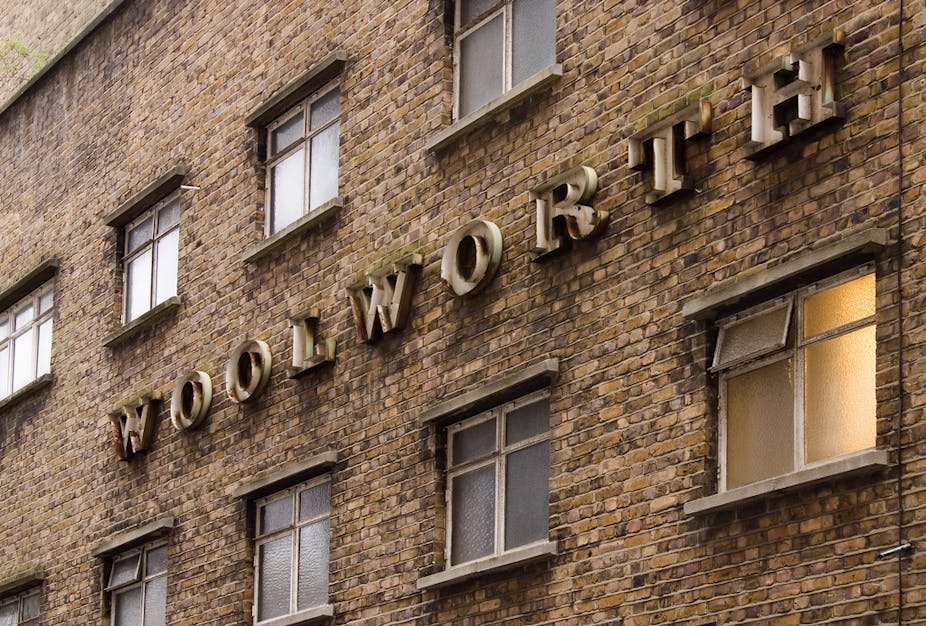The bid for David Jones from South African retailer Woolworths brings to light one curious dimension of international business - the proliferation of firms with very similar brand names but distinct identities.
That so many versions of Woolworths can be found around the world often causes confusion, so here’s some business history to hopefully clear up the etymology.

US “five and dime” pioneer F.W. Woolworth Company is where it all started. It commenced operations in 1878-9 and quickly grew to be one of the largest retail chains in the US. The company’s headquarters in New York was, for a time, the tallest building in the world. The firm ran what we would now call low-cost, High Street, variety stores. F.W. Woolworth did not pursue a supermarket business, but did venture into department stores and speciality stores - most successfully Foot Locker.
With the decline of smaller scale variety stores, especially in the face of Target, Kmart and eventually Walmart, the US Woolworth stores eventually all closed and the parent company was renamed Venator in 1997. The company now trades under its most successful brand, Foot Locker, has a retail presence in 23 countries, and is the world’s 164th largest retailer (according to Deloitte).

The US firm internationalised into Canada, Mexico, Ireland and more significantly into the UK (in 1909) and Germany (in 1927). The UK stores flourished and became a staple of the High Street. The UK firm spun off from its US parent in the early 1980s, and operated successfully until late last decade.
In 2008 the UK entity entered receivership, as the firm had failed to manage the competitive onslaught from supermarket chains such as Tesco, Marks & Spencer and Asda and the decline in CD purchases (one of its biggest market segments). The firm’s 800 plus stores were closed and the brand was sold to an online retailer.
The German business was similarly prolific and by the time it spun off from the US parent in 1998 it had over 300 variety stores across Germany and Austria. It also battled insolvency in 2009, and was purchased by local giant Tengelmann (the world’s 88th largest retailer) which has revitalised the brand.
Most of the Canadian stores were sold off to Walmart in the mid-1990s. The rest closed. The Mexican business (in operation since 1956) slowly shifted into Mexican hands from the early 1980s (due to restrictive foreign ownership rules) and still operates under the Woolworth name.
Now we turn to two more robust Woolworths.

The Australian Woolworths is by the far the largest retailer of this name, coming in at #17 on the global retail rankings. This firm has never had a formal connection to any of the aforementioned firms. The gentlemen who started it in 1924 were simply opportunistic in using the brand name. Legend has it that they telegraphed the US firm in New York and told them that they were using the name, and that the Americans replied saying “That’s fine. We aren’t going to expand down there anyway”.
The Aussie firm was also originally a variety chain, but expanding into supermarkets in 1960. It is has subsequently extended its reach into a wide variety of offerings and formats. Its stable of brands includes Safeway, which was previously an internationalisation effort by the US firm of that name (#25 retailer in world) but was bought by Woolworths in 1985. This Woolworths has not been an overly ambitious internationaliser until very recently. It did enter New Zealand in the early 1930s, but sold the brand on in 1979 and only bought it back in 2005.
And finally, we get to the South African business. It has been in existence since 1931.
Founded by Max Sonnenberg and his son Richard, the firm had no connection to the US or UK businesses. By 1947 it had signed onto a distribution relationship with UK retailer Marks & Spencer which is maintained to this day. It sells clothing, groceries and homewares and is one of the more geographically dispersed retailers in Africa, operating via franchise in countries such as Botswana, Kenya, Lesotho, Mauritius, Mozambique, Namibia, Swaziland, Tanzania, Uganda, Zambia, Zimbabwe, as well as the United Arab Emirates (it pulled out of Nigeria in November 2013). The firm also owns Australian fashion retailer Country Road.

Intriguingly in this complex world of retail doppelgangers, none of the firms had really trod on each other’s turf until now, reflecting the limited internationalisation of retailers generally. As the South African Woolworths has no intentions to bring its eponymously branded stores to our shore, I guess it’ll just be the business pages that get more confusing.

